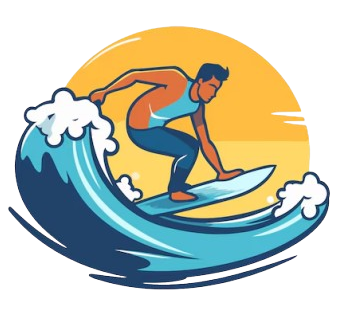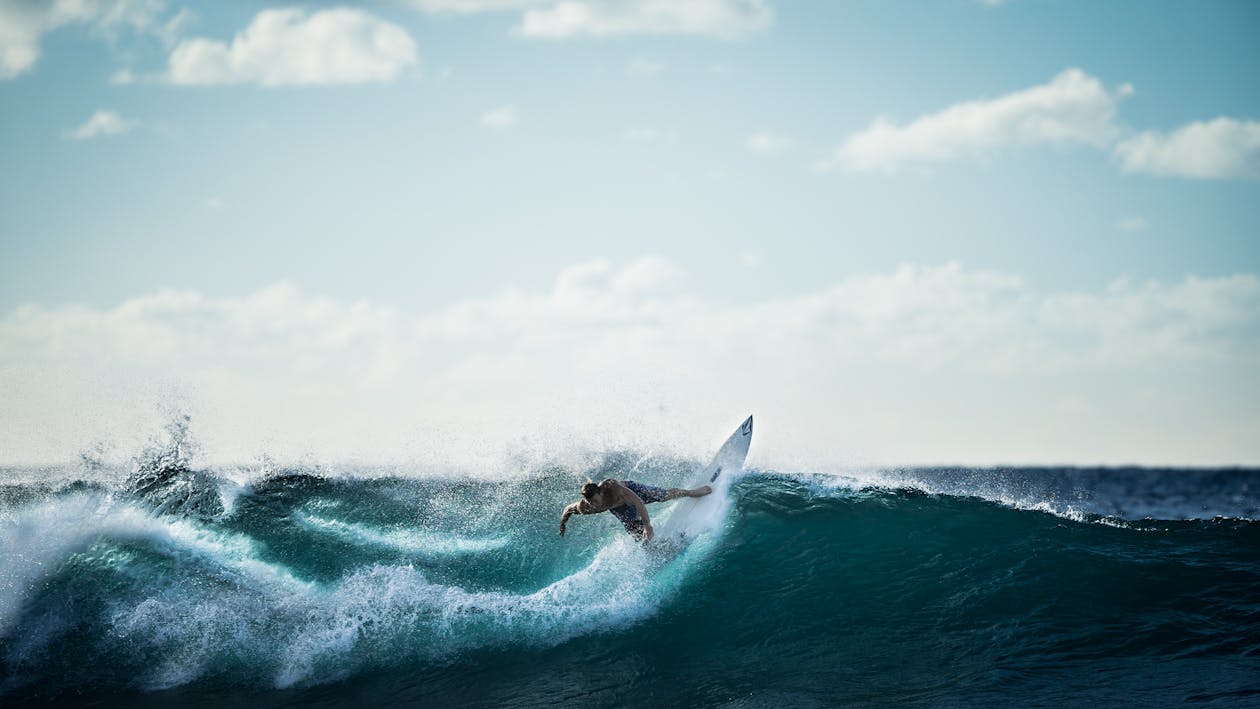Surfing is more than just a sport—it’s a lifestyle that connects you with nature while offering a thrilling and rewarding experience. Whether you’re chasing waves for fun or dreaming of mastering advanced tricks, learning to surf can be a transformative adventure.
This guide covers everything you need to know about starting your surfing journey, from selecting the right gear to mastering the basics. Let’s dive in!
1. Gear Up: Essential Surfing Equipment
Before hitting the waves, make sure you have the right gear:
- Surfboard: Beginners should choose a longboard or foam board for better stability. A wider, thicker board makes catching waves easier.
- Wetsuit: Depending on the water temperature, a wetsuit keeps you warm and protects your skin.
- Leash: A surfboard leash secures the board to your ankle, ensuring you won’t lose it in the surf.
- Wax: Apply surfboard wax for better grip and traction on the board.
2. Learn the Basics on Land
Mastering fundamentals on the beach makes things easier when you’re in the water. Practice these techniques before paddling out:
- Pop-Up: Lay flat on your board with your hands under your shoulders. Push up with your arms while bringing your feet underneath you into a standing position.
- Surf Stance: Place your feet shoulder-width apart, with your dominant foot at the back. Bend your knees slightly and keep your body centered.
- Paddling: Lie on your board and use alternating arm strokes to paddle efficiently through the water.
3. Choosing the Right Surf Spot
Start with beginner-friendly beaches that have:
- Small Waves: Aim for 1-3 foot waves for manageable conditions.
- Sandy Bottoms: A sandy beach is safer than rocky or coral-strewn areas.
- Low Crowds: Fewer people mean more room to practice and fewer collisions.
4. Understand Surf Etiquette
Respecting surf etiquette keeps the experience safe and enjoyable for everyone:
- Right of Way: The person closest to the wave’s peak has the right of way.
- Don’t Drop In: Avoid cutting in front of someone already riding a wave.
- Respect the Locals: Be polite to experienced surfers and follow the beach’s specific rules.
5. Catching Your First Wave
When you’re ready to surf, follow these steps:
- Positioning: Paddle out to where the waves begin to break. Sit on your board and face the horizon.
- Spot the Wave: Choose a wave that looks manageable. Turn your board toward the shore.
- Paddle Hard: As the wave approaches, paddle fast and strong to match its speed.
- Pop-Up: Once you feel the wave lifting you, perform your practiced pop-up and ride the wave!
6. Common Beginner Mistakes to Avoid
- Standing Too Soon: Wait until you feel the wave’s power before popping up.
- Poor Balance: Keep your knees bent and your weight centered.
- Wrong Board Choice: A too-small board can make learning frustrating—start with a longboard.
7. Stay Safe and Have Fun
Surfing is an adventurous sport, but safety comes first:
- Check Weather Conditions: Know the tides, swells, and wind forecasts.
- Use Sun Protection: Apply sunscreen, wear a rash guard, and stay hydrated.
- Never Surf Alone: Always surf with a buddy or in lifeguard-supervised areas.
Conclusion:
Surfing is an exhilarating experience that combines adventure, physical fitness, and a deep connection with the ocean. With the right preparation, gear, and practice, you’ll be riding waves in no time. So grab your board, head to the beach, and embrace the thrill of surfing—you’re in for an unforgettable ride!

